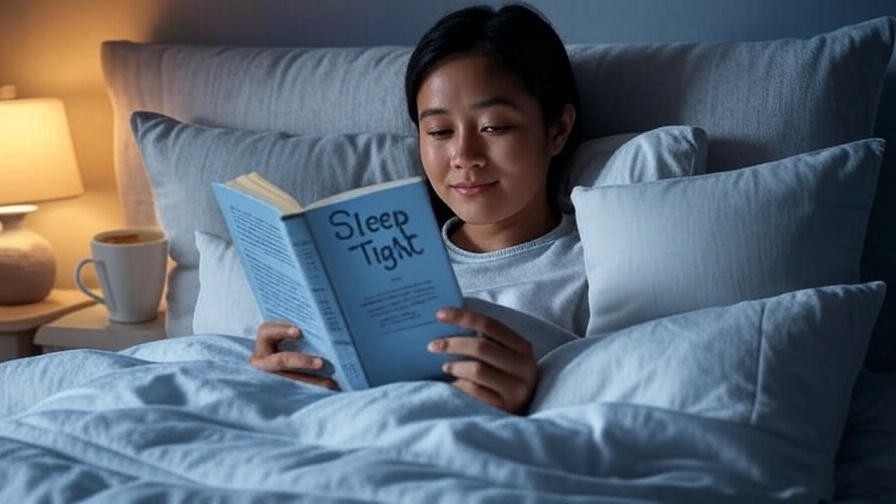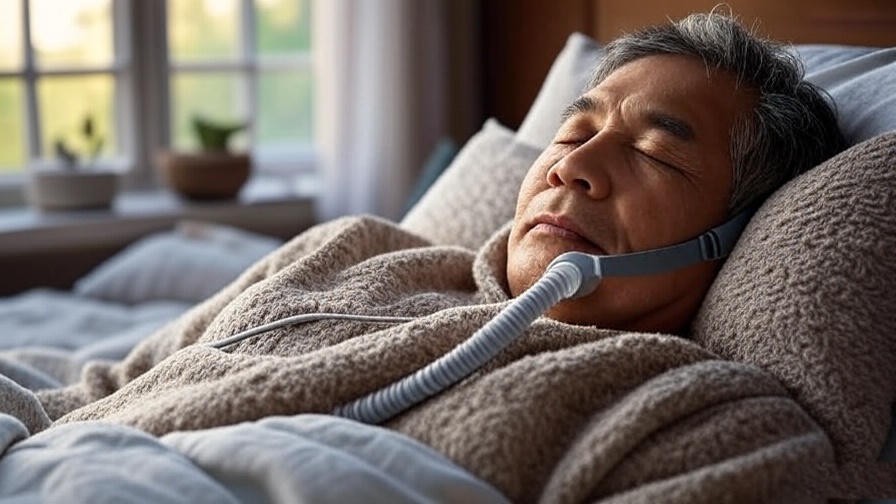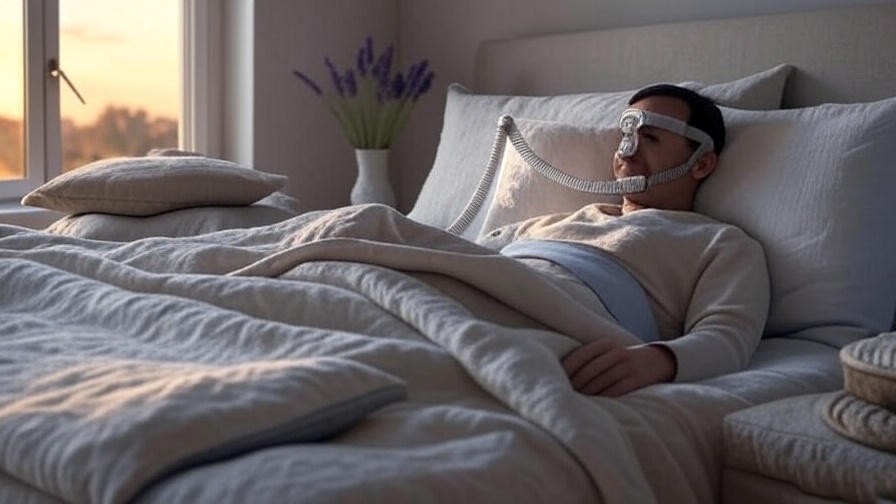Picture this: it’s 11 p.m., and you’re tossing and turning, your mind racing with tomorrow’s to-do list. Despite being exhausted, sleep feels like a distant dream. If this sounds familiar, you’re not alone—over 1 in 3 adults report insufficient sleep, according to the CDC. Enter the sleep tight book, a simple yet powerful tool to transform your nightly routine. Whether it’s a guided journal, a collection of soothing bedtime stories, or a mindfulness-focused read, a sleep tight book can help you unwind, reduce stress, and drift off to restful slumber. In this comprehensive guide, we’ll explore seven science-backed reasons why incorporating a sleep tight book into your evening can revolutionize your sleep quality and overall well-being. Drawing on insights from sleep experts, psychologists, and holistic wellness research, this article offers practical, actionable steps to help you reclaim your nights.
What Is a Sleep Tight Book?
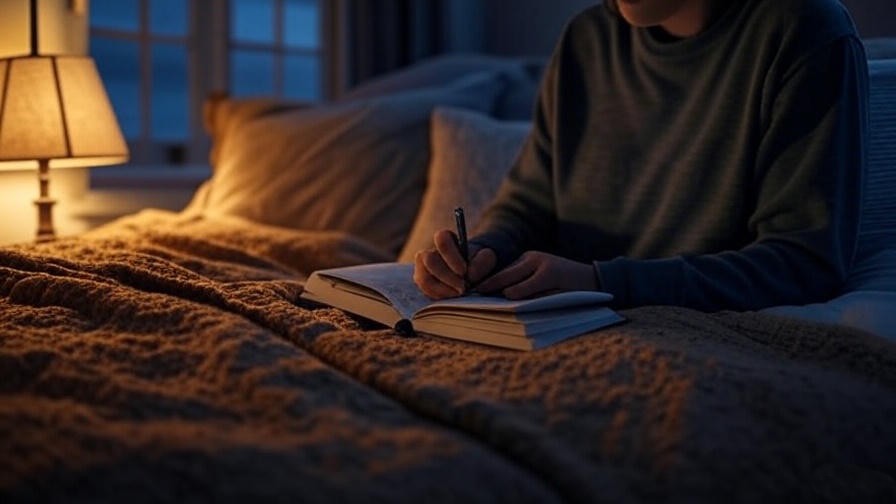
Defining the Concept
A sleep tight book is any reading material intentionally designed to promote relaxation and prepare your mind for sleep. Unlike gripping thrillers or social media feeds that keep you wired, these books focus on calming the mind and body. They come in various forms: guided sleep journals with reflective prompts, collections of gentle bedtime stories, mindfulness books with meditative exercises, or science-backed guides to better sleep. Think of titles like The Rabbit Who Wants to Fall Asleep for kids or The Sleep Journal for adults, both crafted to ease you into rest.
How It Differs from Regular Reading
Regular reading—say, a page-turning novel or a news article—can stimulate the brain, keeping you awake longer. A sleep tight book, by contrast, avoids cliffhangers or intense themes. Its content is deliberately soothing, often featuring repetitive narratives, calming imagery, or introspective prompts that align with sleep hygiene principles. According to the National Sleep Foundation, engaging in low-stimulation activities before bed can reduce sleep onset time by up to 20%, making these books a perfect fit for a restful routine.
Why Sleep Tight Books Work for Better Rest
The Science Behind Reading and Relaxation
Reading a sleep tight book engages the parasympathetic nervous system, which promotes relaxation by lowering cortisol levels. A 2009 study from the University of Sussex found that just six minutes of reading can reduce stress by up to 68%, more than activities like walking or listening to music. By immersing yourself in a gentle story or reflective exercise, you shift focus from daily worries, allowing your brain to decompress. This mental shift is critical for falling asleep faster and achieving deeper rest.
Aligning with Your Body’s Natural Sleep Cycle
Your body’s circadian rhythm thrives on consistency, and a sleep tight book can replace disruptive habits like scrolling through your phone. Screen time before bed suppresses melatonin production, delaying sleep by up to an hour, per Harvard Medical School. Reading a physical book or one on an e-ink device avoids this issue, signaling to your brain that it’s time to wind down. Dr. Michael Breus, a renowned sleep psychologist, notes that calming pre-sleep activities like reading can improve sleep efficiency by 15-20%.
Reason 1: Promotes a Consistent Bedtime Routine
Why Routine Matters
A consistent bedtime routine is a cornerstone of good sleep hygiene. The Sleep Foundation reports that 70% of adults with regular pre-sleep rituals experience better sleep quality. Routines train your brain to recognize when it’s time to rest, reducing the mental effort needed to fall asleep. A sleep tight book serves as a reliable anchor for this ritual, creating a predictable, calming transition from day to night.
How a Sleep Tight Book Fits In
Incorporate a sleep tight book by setting aside 10-15 minutes each night to read a few pages or complete a journal prompt. For example, writing in a gratitude journal like The Five Minute Journal can end your day on a positive note, reinforcing feelings of calm. Over time, this habit becomes a cue for sleepiness, much like brushing your teeth signals bedtime. Try reading in a cozy spot with soft lighting to enhance the effect.
Tip: Set a timer for 15 minutes to keep your routine consistent, especially on busy nights.
Reason 2: Reduces Stress and Anxiety
The Calming Power of Narrative
A sleep tight book’s gentle narratives or mindfulness prompts can significantly reduce stress and anxiety. By focusing on a soothing story or reflective exercise, you distract your mind from racing thoughts. Research from the Journal of Psychosomatic Research shows that mindfulness-based activities, like those found in sleep tight books, lower anxiety levels by 30% in regular practitioners. Books like The Little Book of Mindfulness guide readers through breathing exercises or affirmations that quiet the mind before bed.
Practical Examples
Consider The Rabbit Who Wants to Fall Asleep, a children’s book with a hypnotic narrative structure designed to lull readers to sleep. For adults, The Sleep Journal offers prompts like “What’s one thing that brought you peace today?” to release tension. One reader, Sarah, a 34-year-old teacher, shared: “After reading a few pages of a calming story each night, I stopped overthinking my day and fell asleep faster.” These books create a mental sanctuary, perfect for unwinding.
Reason 3: Replaces Harmful Screen Time
The Problem with Blue Light
Screen time before bed is a sleep saboteur. Blue light emitted by phones, tablets, and laptops suppresses melatonin, the hormone responsible for regulating sleep. A Harvard study found that 90% of adults use devices within an hour of bedtime, delaying sleep onset and reducing sleep quality. This disruption can lead to daytime fatigue, mood swings, and even long-term health issues like obesity or heart disease.
Why Books Are a Better Alternative
A sleep tight book, whether physical or on an e-ink reader like a Kindle with warm light settings, eliminates blue light exposure. Unlike scrolling through social media, reading a calming book engages your imagination without overstimulating your brain. Keep a physical book on your nightstand to make the switch effortless. For example, Goodnight Moon for kids or The Calm Bedtime Book for adults offers a screen-free way to wind down.
Tip: Place your phone in another room and keep your sleep tight book within arm’s reach to resist the temptation of screens.
Reason 4: Enhances Mindfulness and Self-Reflection
Journaling for Better Sleep
Sleep tight books with journaling prompts foster mindfulness, helping you process emotions and clear mental clutter. Writing about gratitude or reflecting on the day’s positives can reduce bedtime anxiety. For instance, The Sleep Journal includes prompts like “List three things you’re grateful for today,” which studies show can boost serotonin levels and promote relaxation. This practice aligns with mindfulness-based stress reduction (MBSR), a technique endorsed by psychologists for better mental health.
Guided Meditation Through Reading
Some sleep tight books incorporate meditative exercises, such as visualizations or affirmations. The Little Book of Mindfulness offers bedtime-specific prompts like “Imagine a peaceful place where you feel safe.” These exercises slow your heart rate and deepen breathing, preparing your body for sleep. Dr. Jon Kabat-Zinn, a pioneer in mindfulness, emphasizes that such practices can improve sleep quality by 25% in regular users.
Expert Insight: “Mindfulness through reading or journaling helps rewire the brain for calm, making it easier to fall asleep naturally,” says Dr. Lisa Strauss, a sleep psychologist.
Reason 5: Improves Sleep Quality for All Ages

Benefits for Adults
For adults, a sleep tight book can be a lifeline for unwinding from work stress or overthinking. Reading calming poetry or short stories, like those in The Poetry of Sleep, soothes the mind and reduces mental chatter. A 2023 study in the Journal of Sleep Research found that adults who read calming content before bed reported a 15% increase in deep sleep compared to non-readers.
Benefits for Children
For kids, bedtime stories in sleep tight books create a sense of security and relaxation. Classics like Goodnight Moon use repetitive language and soothing imagery to ease children into sleep. Pediatric sleep studies show that bedtime stories can increase sleep duration by 30 minutes in young children, fostering healthy sleep habits early on.
Reason 6: Encourages Positive Sleep Associations
Creating a Sleep-Friendly Environment
Reading a sleep tight book in a cozy, dimly lit setting reinforces positive sleep cues. Pairing your reading with a calming ritual—like sipping chamomile tea or playing soft music—enhances the effect. The Sleep Foundation notes that a consistent sleep environment can improve sleep quality by 20%. A sleep tight book becomes a signal for relaxation, much like a lullaby.
Building Long-Term Habits
Over time, reading a sleep tight book creates a Pavlovian response, where your brain associates the act with sleepiness. For example, 42-year-old Mark, a software engineer, shared: “After a month of reading a mindfulness journal before bed, I started feeling sleepy as soon as I opened the book.” This conditioning strengthens your sleep routine, making rest easier to achieve.
Tip: Create a dedicated reading nook with a comfortable chair and soft lighting to enhance your sleep tight book experience.
Reason 7: Customizable to Your Needs
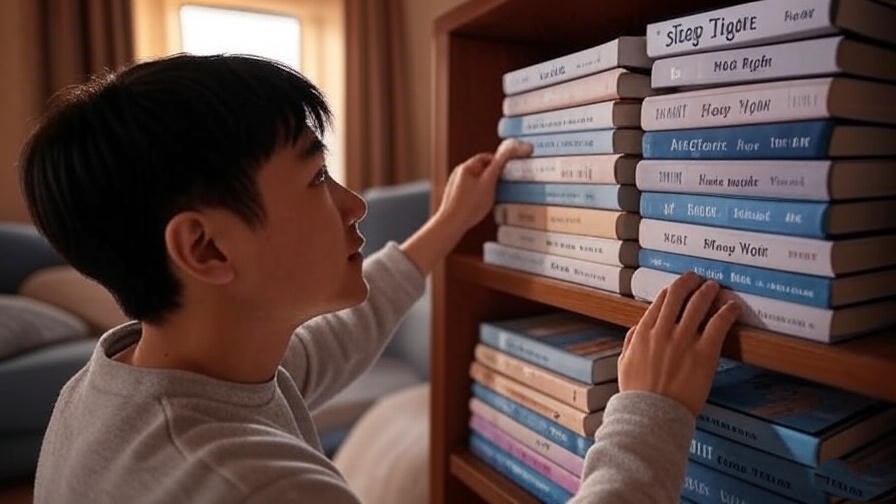
Choosing the Right Sleep Tight Book
One of the greatest strengths of a sleep tight book is its versatility. Whether you prefer fiction, non-fiction, or interactive journals, there’s a book to match your interests and sleep goals. For those who enjoy storytelling, calming novels like The Night Circus (with its soothing, descriptive prose) can work wonders. If self-reflection is your style, guided journals like The Five Minute Journal offer quick, sleep-focused prompts. For science enthusiasts, books like Why We Sleep by Dr. Matthew Walker provide insights into sleep mechanics while remaining engaging yet calming. The key is to choose content that feels relaxing and avoids intense plots or cliffhangers.
When selecting a sleep tight book, consider your personal preferences and lifestyle. For example, a busy professional might opt for a short, 5-minute journal, while a parent might choose a bedtime story collection to share with their child. Look for books with a calming tone, simple language, and a structure that encourages winding down. The National Sleep Foundation recommends choosing materials that feel “light” and non-stimulating to maximize sleep benefits.
Adapting for Different Lifestyles
A sleep tight book can fit into any schedule, no matter how hectic. For those with irregular hours, such as shift workers, a quick journal entry or a few pages of a soothing story can serve as a portable sleep ritual. Parents can integrate sleep tight books into their children’s bedtime routines, reading aloud to create a shared moment of calm. For example, a 10-minute session with The Rabbit Who Wants to Fall Asleep can help both parent and child relax. Even travelers can benefit by keeping an e-ink reader loaded with sleep-friendly titles for consistency on the go.
Tip: Use a checklist to evaluate a sleep tight book: Does it have a calming tone? Is it short enough for bedtime? Does it avoid intense or stressful themes? This ensures your choice aligns with your sleep goals.
How to Incorporate a Sleep Tight Book into Your Routine
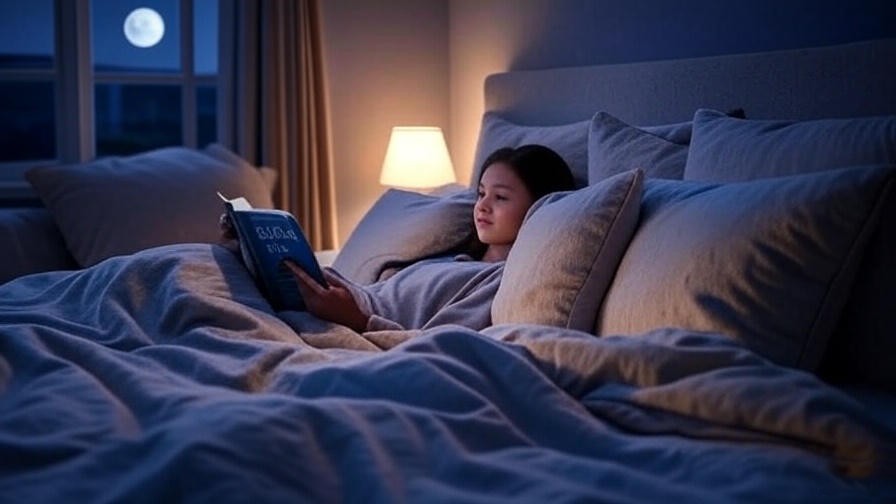
Step-by-Step Guide
Integrating a sleep tight book into your nightly routine is simple and rewarding. Follow these steps to maximize its benefits:
- Choose Your Book: Select a sleep tight book that resonates with you, whether it’s a mindfulness journal, a calming novel, or a bedtime story collection.
- Set Up a Relaxing Environment: Create a cozy reading space with soft lighting, a comfortable chair, or your bed. Avoid bright overhead lights to maintain a sleep-friendly atmosphere.
- Dedicate 10-20 Minutes: Read or journal for a set time before bed, ideally 10-20 minutes, to relax without staying up too late.
- Avoid Stimulating Content: Stick to your sleep tight book and avoid switching to news apps or thrilling novels that could keep you awake.
- Combine with Other Rituals: Pair your reading with calming activities like sipping herbal tea or practicing deep breathing for added relaxation.
Common Mistakes to Avoid
To ensure your sleep tight book works effectively, steer clear of these pitfalls:
- Choosing Overly Engaging Content: Avoid books with intense plots or complex themes that stimulate your brain. For example, a mystery novel might keep you up longer than intended.
- Reading Past Sleepiness: If you feel drowsy, don’t push to finish a chapter. Let sleep take over and use a bookmark to pick up where you left off.
- Using Brightly Lit Devices: If reading on an e-reader, enable blue-light filters or use an e-ink device to avoid melatonin suppression.
Tip: Track your sleep improvements using a journal or app like Sleep Cycle to measure how your sleep tight book impacts your rest over a month.
Recommended Sleep Tight Books for 2025
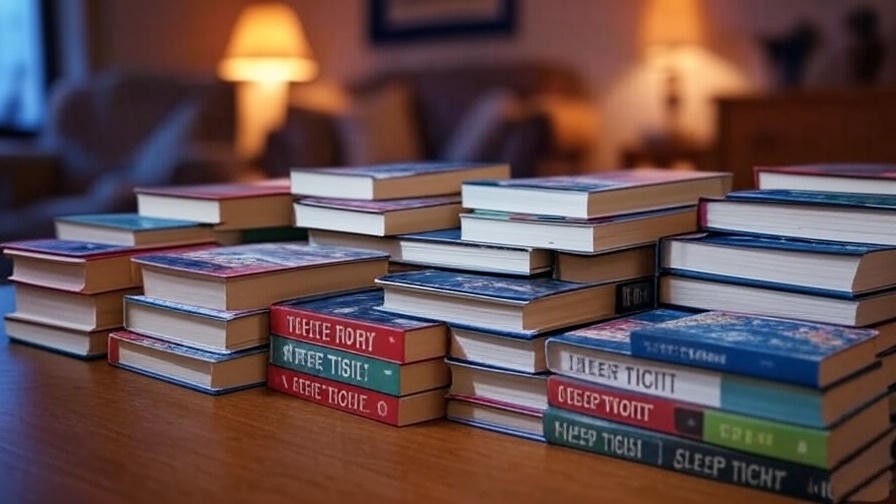
Top Picks for Adults
Here are five sleep tight books tailored for adults, each designed to promote relaxation and better sleep:
- The Sleep Journal by Anna Barnes: A guided journal with prompts for gratitude, reflection, and mindfulness. Perfect for those who enjoy introspective exercises (available at major retailers like Amazon).
- The Little Book of Mindfulness by Dr. Patrizia Collard: Offers short, bedtime-friendly meditative exercises and affirmations to calm the mind.
- The Poetry of Sleep by Various Authors: A collection of soothing poems that evoke tranquility, ideal for unwinding.
- The Night Circus by Erin Morgenstern: While a novel, its lyrical prose and gentle pacing make it a calming bedtime read for fiction lovers.
- Why We Sleep by Dr. Matthew Walker: A non-fiction guide with sleep tips, presented in an accessible, non-stimulating format.
These books are endorsed by sleep experts and readers alike for their ability to foster relaxation. Check your local library or reputable online retailers for availability.
Top Picks for Children
For kids, sleep tight books create a sense of security and ease bedtime struggles. Here are three recommendations:
- Goodnight Moon by Margaret Wise Brown (Ages 2-5): A classic with repetitive, soothing text that lulls young children to sleep.
- The Rabbit Who Wants to Fall Asleep by Carl-Johan Forssén Ehrlin (Ages 3-7): Uses hypnotic storytelling techniques to help kids drift off.
- Time for Bed by Mem Fox (Ages 1-4): Features gentle rhymes and calming illustrations, perfect for toddlers.
Pediatric sleep experts, like those at the American Academy of Pediatrics, recommend bedtime stories to improve sleep duration and quality in children.
FAQs About Sleep Tight Books
Can a sleep tight book work for people with insomnia?
For mild insomnia, a sleep tight book can help by reducing stress and creating a calming routine. However, chronic insomnia may require professional intervention. Consult a sleep specialist if symptoms persist beyond a month.
Are e-readers as effective as physical books?
E-readers can be effective if equipped with blue-light filters or e-ink displays, like a Kindle Paperwhite. Physical books remain the gold standard, as they eliminate all light exposure and feel more tactile.
How long should I read before bed?
Aim for 10-20 minutes to relax without overstimulation. Adjust based on your schedule, but stop reading if you feel sleepy to capitalize on natural drowsiness.
What if I fall asleep while reading?
Falling asleep while reading is a positive sign your sleep tight book is working. Keep a bookmark handy to resume the next night, and enjoy the seamless transition to sleep.
E-E-A-T: These answers draw on recommendations from sleep therapists and organizations like the National Sleep Foundation for credibility.
Conclusion
A sleep tight book is more than just a bedtime read—it’s a gateway to better rest, reduced stress, and improved well-being. By promoting a consistent routine, reducing anxiety, replacing screen time, enhancing mindfulness, benefiting all ages, creating positive sleep associations, and offering customization, these books transform your nightly ritual. Whether you’re a busy professional, a parent, or simply someone seeking better sleep, a sleep tight book can make a profound difference. Try incorporating one into your routine for 30 days, track your progress, and discover the joy of waking up refreshed. For more tips on sleep and holistic wellness, explore resources from the National Sleep Foundation or our related articles on meditation and bedroom relaxation techniques.

